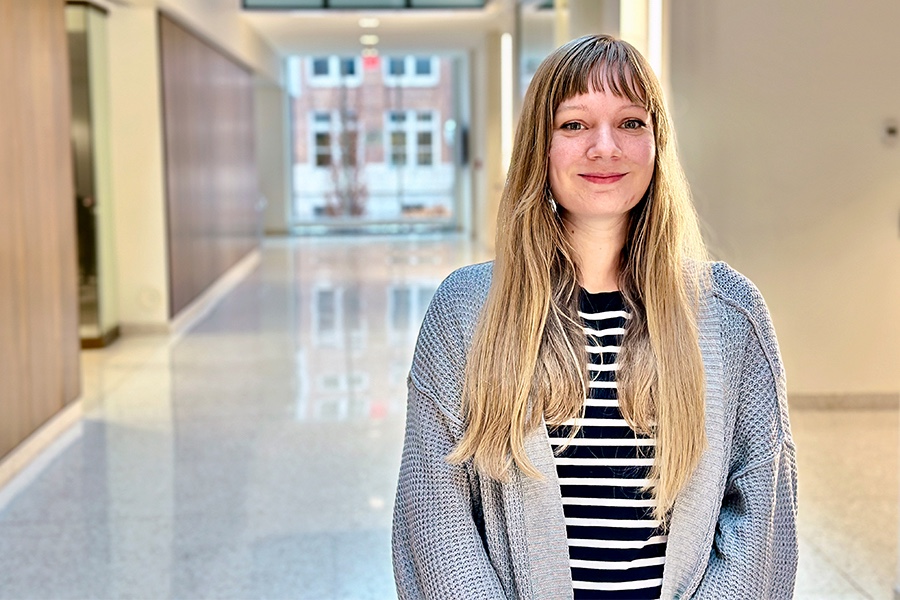“Working on a satellite that could go to space is something I never imagined I’d do as an undergrad.”
That’s physics major Kelsey Henry describing one reason she’s excited about working in the University of Minnesota Twin Cities’ Small Satellite Research Laboratory.
A transfer student from the Minneapolis College of Art and Design and Minneapolis Community and Technical College, Henry sees the challenge of designing small—as in shoebox-sized—satellites as a way to combine art and science. Called CubeSats, these satellites are built to work in near-space and low Earth orbit.
Currently, Henry is working on two sister projects. One will use CubeSats to study powerful flares that erupt from the surface of the sun. The other will test a method of using distant, rapidly spinning stars to navigate in space, where GPS is not an option.
The latter project, says Henry, “will be hosted as an experimental science payload on the International Space Station—a rare opportunity for an undergraduate-led project.”
The social side of science
Beyond the nuts and bolts, Henry and the other students on the projects are learning how to solve problems together, taking advantage of their backgrounds in fields like electrical and mechanical engineering, astrophysics, and computer science. As a project manager, Henry is also learning how to lead a team and keep the sub-teams working in sync.
And she’s learned the crucial importance of good communication skills.
“I’ve learned how important it is to document everything clearly and stay adaptable,” she says. Also, “technical writing has been a huge one—creating documents that clearly explain complex ideas for other teams or partners like NASA’s Minnesota Space Grant Consortium or the Air Force Research Lab.
“I’ve also gained confidence, knowing I can step into something unfamiliar and figure it out alongside a supportive team.”
This story is adapted from the College of Science & Engineering
